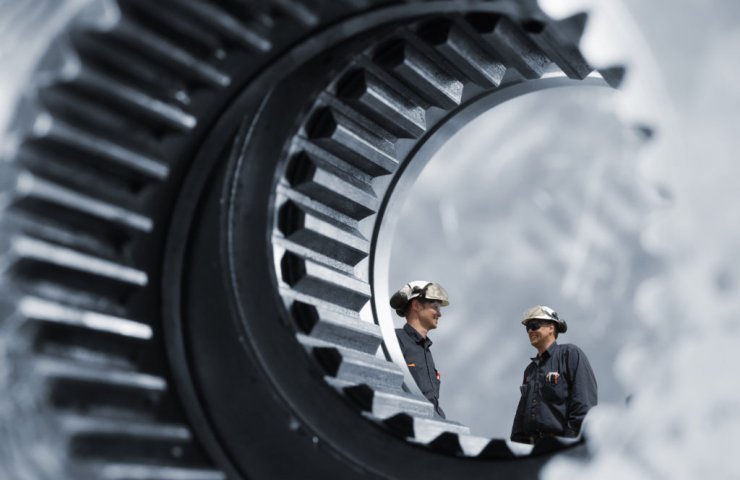In June 2018, a symbolic groundbreaking ceremony took place at the site of a pilot steel mill in Luleå, Northern Sweden. This marked the start of a project that we hope will ultimately lead to a revolution in steel making - cutting the carbon footprint of a steel mill to near zero.
A project called Hydrogen Breakthrough Ironmaking Technology (HYBRIT) aims to replace coke, traditionally used in steel production, with hydrogen from renewable electricity. Both coke and hydrogen can be used as a reducing agent to remove impurities from iron ore. In traditional steelmaking, carbon in coke reacts with oxygen in iron ore to form carbon dioxide. When hydrogen is used instead of coke, it reacts with oxygen in the iron ore to form water vapor.
The project participants believe that it can significantly decarbonize the steel industry in Sweden and other countries. Indeed, the steel industry as a whole is constantly striving to improve the efficiency of its processes, and producing a ton of steel now requires 40% of the energy needed in 1960.
HYBRIT is a joint venture between SSAB, the largest steel producer in Northern Europe, LKAB, the largest iron ore producer in Europe, and Vattenfall, one of Europe's largest electricity producers. If successful, the project could reduce total carbon dioxide emissions in Sweden by 10 percent and in Finland by seven percent.
Mårten Görnerup, CEO of the joint venture, explains the timing of the project:
In the right place, at the right time
Currently, most of the hydrogen is produced in a process called steam reforming, which involves using high-temperature steam to extract hydrogen from natural gas, a fossil fuel. What's special about the HYBRIT process is that all of the hydrogen is produced by passing an electric current through water in a process called electrolysis. Although it is energy intensive, if the required electricity can be obtained from renewable sources, the carbon emissions in the entire process are negligible.
Sweden has proven to be an ideal place to implement HYBRIT technology due to a combination of several factors.
Sweden has good access to renewable electricity, easy access to water, high-quality iron ore in Europe and a specialized, innovative steel industry, says Gornerup. The signing of the Paris Agreement and the decision in the national parliament that Sweden will stop using fossil fuels for power generation by 2045 means that the timing is perfect too.
The plant will be used for pilot campaigns to find optimal conditions to reduce 2 CO emissions. The project will provide a clearer understanding of what is happening within an interconnected industrial system and how to achieve an efficient manufacturing process.
Martin Lindqvist, President and CEO of SSAB, adds:
Costing
The Swedish government provides extensive support to HYBRIT, and in June the project received the largest financial contribution from the Swedish Energy Agency with a total of SEK 528 million, equivalent to € 51.3 million.
While initial research suggests that HYBRIT's production costs will be about 20-30 percent higher than traditional steelmaking processes, this gap is expected to narrow over time, which could lead to higher carbon footprint costs through emissions trading European Union and the expected decline in the cost of renewable energy.
If HYBRIT is successful, the implications for the future of global steelmaking could be significant. Gernerup concludes:
Posted by Rachel Mostin





